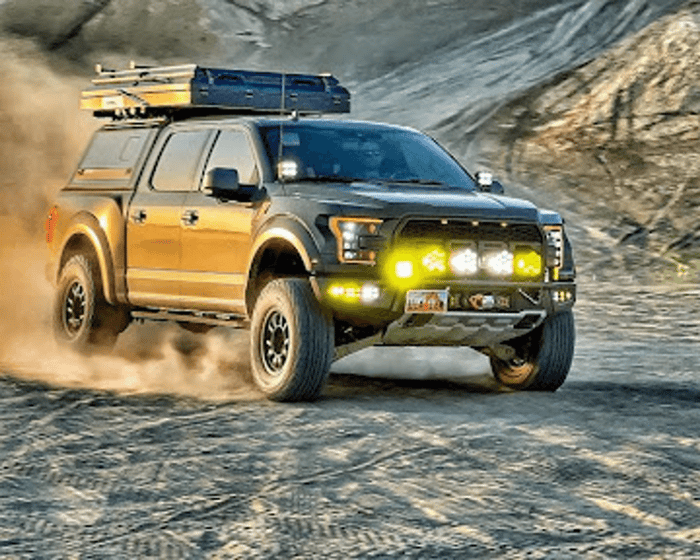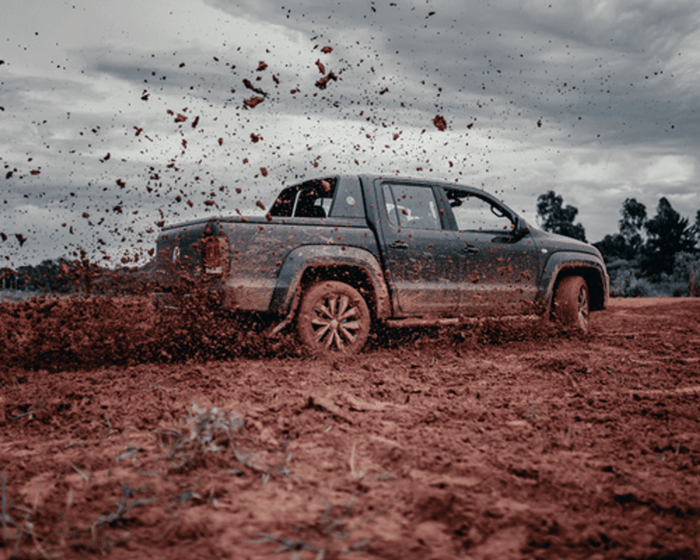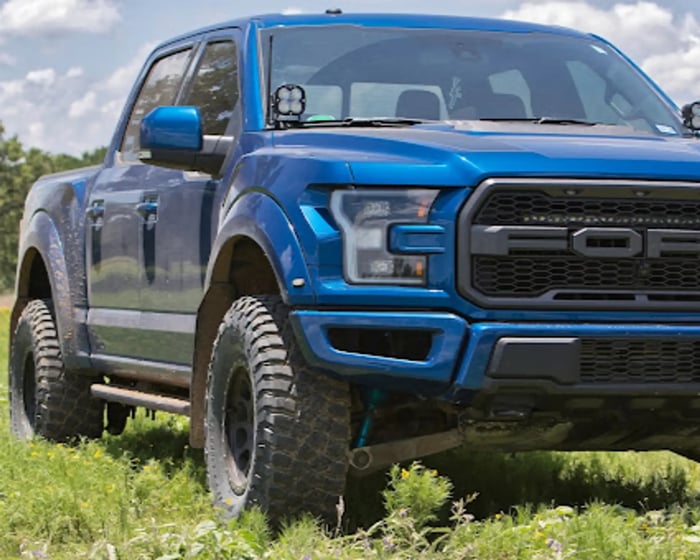
Driving on Sand? Tips to Make Sure You’re Prepared
Whether you take your off-road truck or SUV to the beach or the dunes, driving on sand can be a lot of fun. Sand is a challenging terrain that can put both your driving skills and your custom build to the test. Before you decide to take on the challenge, however, you need to understand what is involved in driving on the shifting terrain and how to build your vehicle to conquer it. From equipment to accessories and techniques, it takes more than sand tires for trucks to be successful. Here’s what you need to think about before enjoying this kind of off-road experience.
The Terrain That’s Never The Same
It’s important to note that beach and desert driving are different, but some basic gear and techniques are helpful for both. That’s what we’ll be focusing on in this blog–the foundational elements to driving on sand. That means we’re offering a starting point to preparing yourself and your vehicle, but as with any outing, do your own research to further prepare yourself for specific locations, obstacles, and challenges.
While that is always good advice, it becomes particularly difficult in sandy areas because sand constantly shifts and moves. On the beach, the tide can add deposits, carry them away, erase tracks, and leaves areas of wet, sloppy terrain that look dry to bog your vehicle down. Desert dunes move with the wind, sliding and shifting between visits, leaving a well-explored area fresh and new. It breaks the rules of torque over horsepower that are so common elsewhere in off-roading, instead requiring wheel speed and control to keep your vehicle going. It’s time to dig into our top driving tips to avoid digging yourself in when driving on sand.
Skills To Master
Before we get into the equipment you’ll need on your truck, let’s look at the most important component to a successful off-road outing when driving on sand: you. No matter how many upgrades you get, you still have to upgrade your skills and use them properly in the field.
- Air Down Your Tires - We’ve talked plenty about airing down your tires, and it’s an important technique to master for all off-roaders. On the incredibly loose surface of the sand, however, it’s vital. How low should you go? Because sand is so soft and loose, you need as much traction as possible. Many off-roaders start as low as 15 to 17 PSI, and some go even lower, especially with beadlock rims.
- Keep It High - 4H is the way to go on sand. You need the additional traction from all four wheels, but low gear offers too much torque for the loose terrain and not enough speed to keep your transmission components cooled properly.
- Keep Moving - Momentum is your friend when driving on sand. The general rule for off-roading is as fast as necessary and as slow as possible, and that is especially true here. You need to go fast enough to keep moving forward, climb hills, and maneuver for obstacles, but slow enough to avoid an accidental dig-in or loss of control that could injure yourself and others or end up damaging your vehicle.
- Straight And True - When driving on sand, you want to keep movements straight, as turning the wheels can cause your tires to dig into the terrain, loosening sand and requiring more power to navigate, which in turn, can dig you in further. Even with sand tires for trucks, you want your wheels to stay on top of the sand, carrying you along without sinking into the terrain. Whenever you’re wheeling with a group, stay in the tracks left by the driver in front of you. That sand has already been compressed, so it provides better traction than fresh, “virgin” sand that is still loose.
- Climb Efficiently - For many off-roaders, the challenge of dunes and hills is what draws them to driving on sand. Climbing is a function of traction and momentum, leaving your sand navigation short on one of those vital components. When you approach a climb, you need to make as straight a climb as possible, with enough speed to crest the hill but not enough to launch afterward, potentially digging you into your front axles on the other side. If you find yourself losing momentum and need to bail on the climb, don’t try to turn around. Back down the hill in a straight line for another try.
- Coast To A Stop - If you do need to stop, whether to survey upcoming obstacles or for a killer picture of your vehicle, don’t use your breaks. This causes your wheels to dig a sand wedge in front of them, making it harder to get going again. Coast to a stop in neutral, preferably on a slight downgrade that will help you rebuild momentum. To get started again, reverse slightly to create a small wedge of hard-packed sand behind and under the wheels, then drive forward.
- Wet Sand Sinks - Whether you’re approaching sand that’s been uncovered by low tide, a water crossing, or some other wet area in an otherwise sandy location, driving on wet sand changes the rules. In many ways, it’s easier to drive on, and the more compacted nature makes maneuvering, acceleration, and braking easier. The danger comes in stopping, which can leave your vehicle sunk to the axle in minutes. In a saltwater environment, such as the beach, this can also do thousands of dollars of damage to your vehicle as the highly corrosive nature of salt water eats at your metal and electronic components.

Gear for Your Build
When you get ready to build out your vehicle for the beach or dunes, sand tires for trucks may be at the top of your list, but don’t stop there. As with any dedicated off-road vehicle, we expect that you’ll choose a specialized tire meant for the terrain, and we’re always ready to help you get the perfect fit for your truck when you give us a call. We’re going to talk about the other equipment and accessories that need to make it onto or inside the vehicle before you take off for adventure.
- Air Down Kit - Consistency is key when you want to improve your off-roading skills. An air down, air up kit takes it to the next level, letting you both air your tires down to the same, set level each time but also air them back up for safety when it’s time to head home for the day. The Up Down Air Systems Gen 2 Air Delivery System is one of the best on the market for fast, efficient air management for off-road vehicles. Deflation is smooth and consistent, while inflation is fast and convenient, making it a great choice for your vehicle.
- Traction Boards - Another must-have off-roading accessory for driving on the sand that you’ve heard about before is a good set of traction boards. Traction boards fit under your tires, providing a broad, more stable surface area that lets your tires get the traction they need to dig themselves out of trouble. The broad surface helps them stay above the sand, while traction aids molded into the board give your tires the grip they need for power distribution. It’s important to understand that you shouldn’t stop as soon as you dig out. Drive to a more stable area, coasting to a stop, and walk back to collect your boards. The last thing you want to do is creep across the terrain, digging yourself out every 20 feet.
- Recovery Shovel - Recovery shovels are especially useful in loose terrain when you may need to dig your vehicle out. A Krazy Beaver Recovery Shovel is a solid choice for any off-roading loadout. With a powder-coated metal handle and 13-gauge steel blade, you have plenty of durability and power when you need it, while the toothed design helps you chew into the ground and whatever is under it. Another all-in-one option is the Rugged Ridge Recovery Kit which gives you both a set of traction boards and a small utility shovel to create room under the wheels to place them.
- Dune Flag - You may have a large truck, but when you’re wheeling by dunes and hills, it can still be hard for others to see you. Too many times, driving on sand has ended with a collision coming over a hill or around a blind turn. Braking and steering maneuvers don’t work as well, making situational awareness even more important. Adding a dune flag makes it easier for you to be seen by other off-roaders, hikers, and bystanders for safer off-roading.
- Kinetic Recovery Rope - A recovery rope or snatch strap is an important piece of recovery gear every off-roader should have. While you can make do with a tow rope in some situations, driving on sand isn’t one of them. The abrupt jerk of a non-stretching tow strap is a recipe for two stuck vehicles instead of one. With a kinetic rope, such as the Factory 55 68 Extreme Rovery Rope, the power is transferred to the rope as it stretches. Once enough energy is stored, the energy is passed onto the stuck vehicle in a smooth progression that pulls it free without jerking on it or the tow vehicle.
Be Ready For Your Sandy Shenanigans
We’re proud to offer the gear you need for driving on sand backed by experienced off-road pros who are always a phone call away when you need help. Whether you need more information, build advice, or installation guidance, there’s an expert ready to talk–days, nights, or weekends. Order the parts you need to elevate your off-road experience from Offroad Alliance today.



